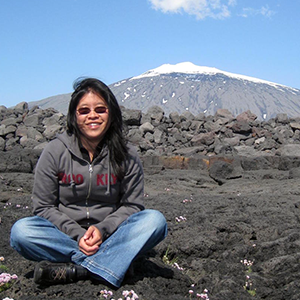Downloads
Research Interests
Trained as a molecular and cell biologist, my research focuses on characterizing the underlying molecular mechanisms that have contributed to the ecological success of phytoplankton. Despite representing <1% of the Earth’s biomass, this microscopic slice of the planet contributes nearly 50% of global primary productivity and plays a role in nearly every major biogeochemical cycle including carbon, nitrogen, and silicon. To understand how these organisms will respond to future predicted changes in the ocean, we need to understand the molecular and biochemical mechanisms that govern their physiological responses. My research combines molecular, biochemical, and biophysical techniques with large scale genomic and transcriptomic studies to answer fundamental questions about the physiology and functional ecology of this globally important group of organisms. Using laboratory model systems of diatoms and coccolithophores, we seek to understand how these organisms respond to environmental stress (e.g. light and nutrient availability, viral infection) and the factors that control their growth and productivity. We then extend these culture-based observations to natural populations on oceanographic research cruises using observational and deck-board manipulative studies.
Short History
I grew up in California and received my B.S. in Biochemistry and Cell Biology from the University of California, San Diego. My first introduction to academic research was as an undergraduate in a Developmental Neurobiology lab at the Salk Institute. After college, I got a job at a biotech company involved in sequencing the first human genome. After 3 months, I realized I preferred the challenge of academic research and the freedom and creativity it allowed. I then got a job as a Research Associate in an Immunology lab at Stanford University where I conducted HIV-related research. I discovered a love for research, but wanted to apply the skills and knowledge I acquired in the biomedical field to an environmentally-related one. After completing a non-thesis driven Master’s in Biology at Stanford’s Hopkins Marine Station, I went on to the PhD program in Marine Biology at the Scripps Institution of Oceanography.
Teaching Efforts
I teach a fully online, asynchronous course call Science, Pseudoscience and Society, which explores how science has influenced society and how we distinguish science from pseudoscience. It debuted in Spring 2020 before the COVID-19 pandemic but couldn’t have been more timely. I have also served as an undergraduate faculty advisor to students enrolled in the G.H. Cook Honors, the Research in Ocean Sciences, and the Aresty Research programs.
Selected Publications
Maniscalco M, MA Brzezinski, RH Lampe, NR Cohen, HM McNair, KA Ellis, M Brown, CP Till, BS Twining, KW Bruland, A Marchetti, and K Thamatrakoln. (2022) “Diminished carbon and nitrate assimilation drive changes in diatom elemental stoichiometry independent of silicification in an iron limited assemblage” ISME Communications https://doi.org/10.1038/s43705-022-00136-1
Locke H, KD Bidle, K Thamatrakoln, CT Johns, JA Bonachela, BD Ferrell, KE Wommack (2022). “Marine viruses and climate change: Virioplankton, the carbon cycle, and our future ocean” in Advances in Virus Research, Ed MJ Roossinck, Academic Press (Cambridge, MA), Vol 114: 67-146 https://doi.org/10.1016/bs.aivir.2022.09.001.
Arsenieff L, K Kimura, CF Kranzler, A-C Baudoux, K Thamatrakoln (2022). “Diatom Viruses” in The Molecular Life of Diatoms, Eds A Falciatore and T Mock, Springer Nature (London, England)
Kranzler CF, MA Brzezinski, NR Cohen, RH Lampe, M Maniscalco*, CP Till, J Mack*, JR Latham*, BS Twining, A Marchetti, and K Thamatrakoln (2021) “Impaired viral infection and reduced mortality of diatoms in iron limited oceanic regions” Nature Geosciences 14:231-237 doi.org/10.1038/s41561-021-00711-6
Berges JA, Young E, K Thamatrakoln, AR Taylor (2021). “From Genes to Ecosystems: using molecular information from diatoms to understand ecological processes” in Advances in Phytoplankton Ecology: applications of emerging technologies, Eds L Clementson, R Eriksen, and A Willis, Elsevier (Amsterdam, Netherlands)
Kranzler C, JW Krause, MA Brzezinski, BR Edwards, WP Biggs*, M Maniscalco*, JP McCrow , BAS Van Mooy, KD Bidle, AE Allen, and K Thamatrakoln (2019) “Silicon limitation facilitates virus infection and mortality of marine diatoms” Nature Microbiology 4:1790–1797

